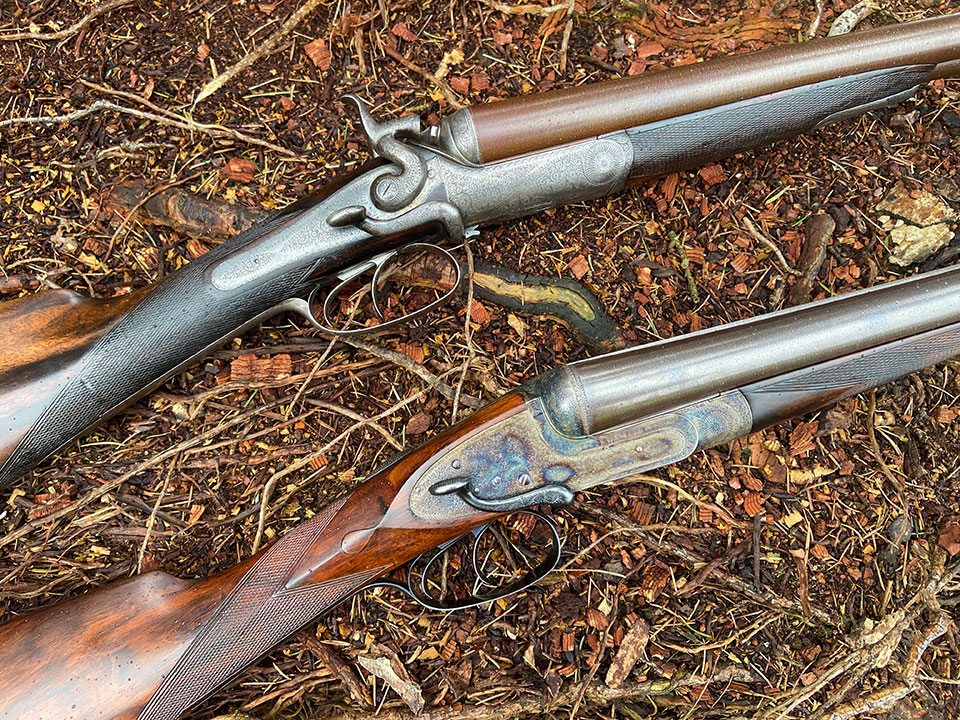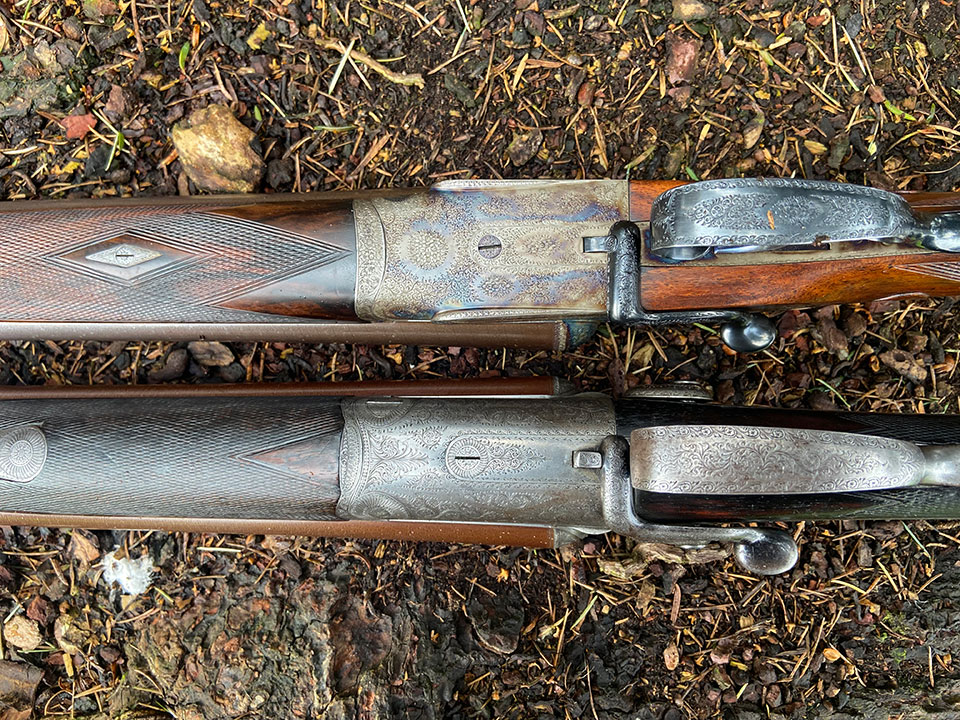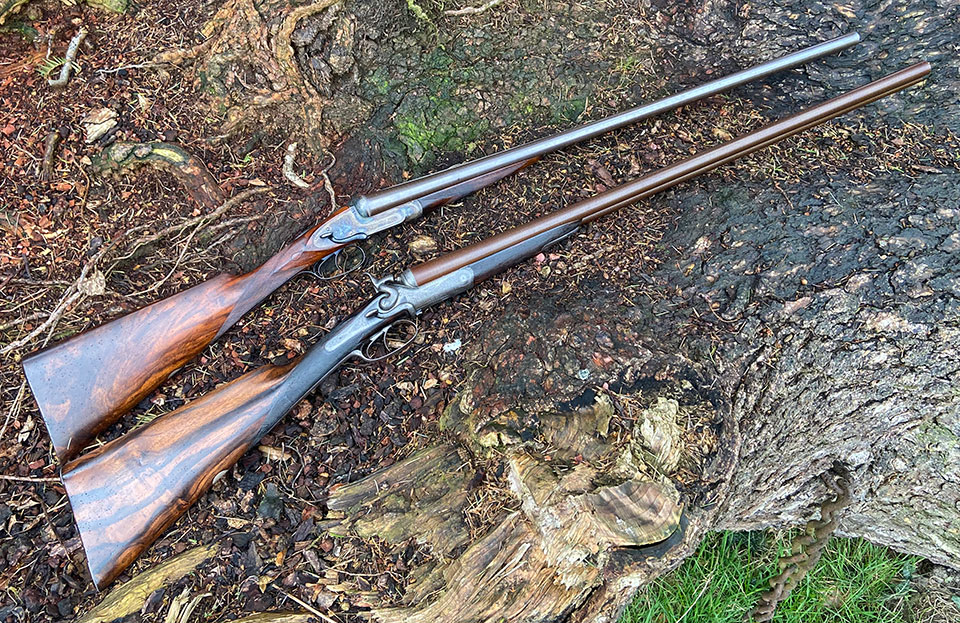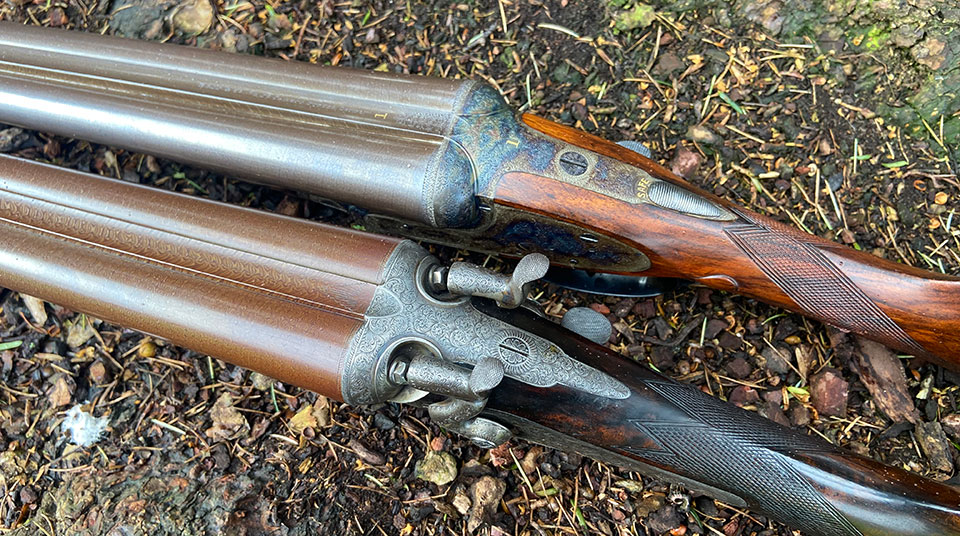These Boss 12-bores illustrate the carry-over in style from the hammer era into the hammerless, as the guns change but styling cues particular to the gun maker carry-over.
The hammer gun, serial number 3846, was made in 1885 and is one of 283 'side-snap' guns built before 1890, during the era when the firm was controlled by Edward Paddison. Hammerless gun No.4367 was made a decade later, in 1895. This was four years after Boss had been taken over by John Robertson.

The significant advances in gunmaking over that decade can be seen from the hand-cocked hammer gun to the hammerless ejector sidelock. However, both guns retain an aesthetic that signifies their heritage. Both are graceful, sleek and beautifully made. They also both have damascus barrels and side-levers. The hammerless gun is a bar-action sidelock, while the hammer gun sports back-locks.
It is sobering to remember that the very first Boss centre-fire gun was sold in 1866, just nineteen years before the hammer gun pictured here was made.

During the period from 1858 to 1890, when Edward Paddison owned Boss, more side-lever hammer guns were made there than any other type. Paddison did start selling hammerless guns in the 1880s, as well as hammer guns. His hammerless guns were often Perkes patent (no.1968 of 1878) back-lock models and they retained the side-lever operation he preferred.
The hammerless gun has replaced the inert grip-catch retaining the forend of the hammer gun with a more modern Anson pushrod, though that was patented in 1873 and would have been an option when the 1885 hammer gun was made.

Also, with the advent of the hammerless gun, the need for a safety catch arrived, which is activated by the central slide, marked 'SAFE' in gold.
The case colours on the hammer gun have faded with use and time. Those on the hammerless gun are renewed and bright. To my eye they look wrong, as do 90% of re-colour hardened vintage guns. It is very difficult not to make the gun look like it is trying too hard when you subject it to this process long after it was first made.
However, the browning on the barrels of the hammerless gun is far closer to the original colour than has been managed by the re-browners of the hammer gun. This will be re-done to a better standard so that the colur suits the age and look of the gun as a whole.
When made, in 1895 the hammerless gun would have cost about sixty pounds. The hammer gun wold have cost forty-five pounds a decade earlier, in 1885.
The side-lever was a favoured mechanism of Paddison but the style must have been one that Boss customers had become accustomed to and liked, for they continued to order them even when Robertson had taken over and top-levers were far more commonly used by the majority of London gunmakers.
By the 1890s, however, top-levers had begun to dominate the order books, as Boss fell in-line with its rivals in that regard.
In both cases, the guns sport the fine engraving that Boss typically had executed by the Sumner workshop in London. The quality of material and constructon is first rate and the pair make fine bedfellows.
Published by Vintage Guns Ltd on (modified )




